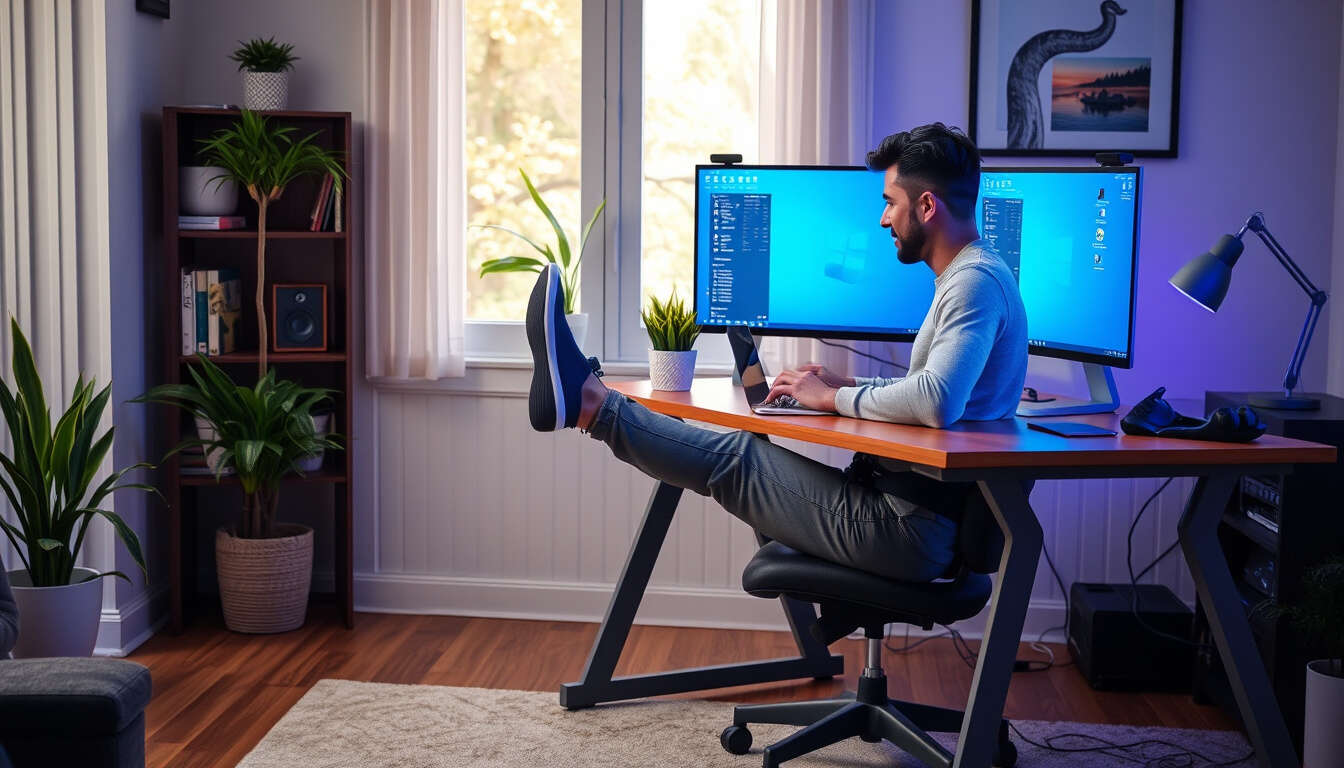Benefits of Foot Rests for Developers' Well-Being
 by Marlene Keeling
by Marlene Keeling
Foot rests offer simple yet effective solutions to common health issues faced by developers, such as poor posture and leg discomfort. By promoting better ergonomics, they help reduce physical strain and support overall health, making them essential for a sustainable work routine.

Maintaining physical health is crucial for developers who spend long hours at their desks. One often overlooked tool that can make a significant difference is the foot rest. This simple accessory supports the feet and legs, helping to alleviate pressure on the lower body and improve overall posture.
For developers, who frequently sit for extended periods, poor posture can lead to back pain, neck strain, and even long-term issues like sciatica. A foot rest addresses this by allowing the feet to rest at a slight elevation, which encourages the spine to align properly. Studies from the American Journal of Industrial Medicine highlight that ergonomic adjustments, including foot supports, can reduce musculoskeletal disorders by up to 30 percent in office settings.
Consider a real-life example: Sarah, a software developer, experienced chronic leg fatigue and lower back pain after hours of coding. After incorporating a foot rest into her setup, she noticed immediate relief. Her legs no longer dangled uncomfortably, and she could maintain a neutral sitting position, which reduced her discomfort and allowed her to focus better on her tasks.
Beyond physical comfort, foot rests play a role in preventing burnout. When developers feel physically at ease, they are less likely to experience the mental fatigue that comes from constant discomfort. This ties into broader aspects of work-life balance, where small changes can lead to better energy levels and productivity.
Nutrition and exercise also intersect with ergonomics. A developer who feels good physically is more inclined to take breaks for movement or healthy meals. For instance, using a foot rest can make sitting more bearable, encouraging regular stretching or short walks, which are vital for circulation and mental clarity.
Sleep hygiene benefits indirectly as well. Chronic pain from poor posture can disrupt sleep patterns, but with better support during work hours, developers like Mike, who works remotely, report improved rest at night. He found that his foot rest helped him end his day without the usual aches, leading to more restful sleep and a refreshed start the next morning.
The psychological impact of remote work adds another layer. Isolation and sedentary routines can worsen stress, but ergonomic tools like foot rests foster a sense of control over one's environment. Research from the Journal of Occupational Health Psychology indicates that ergonomic interventions can lower stress levels by enhancing comfort and reducing physical complaints.
To incorporate a foot rest effectively, start by choosing one that adjusts to your height and desk setup. Aim for a model that angles slightly to promote blood flow. Combine this with other habits, such as regular posture checks and scheduled breaks, to maximize benefits.
In summary, foot rests are a practical investment for developers seeking to enhance their physical and mental health. By reducing strain and supporting better habits, they contribute to a more balanced professional life, paving the way for sustained well-being and productivity.
- Key Tips for Using a Foot Rest:
- Position it so your knees bend at a 90-degree angle.
- Adjust height to keep your feet flat and supported.
- Take moments to shift positions and avoid prolonged stillness.
